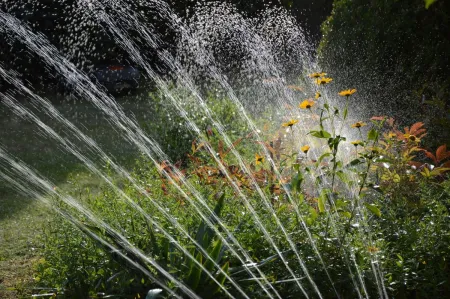Is the grass really greener on the other side? It just might be—but not without a lot of care and maintenance.
As most homeowners know, maintaining one’s lawn often requires extensive care in the forms of irrigation, pesticide application, and fertilization—all of which can have significant impacts on the environment. With lawns now covering nearly four times as much land as the United States’ leading irrigated crop (corn), there is a need to understand what factors inform lawn care decisions.
So, to better understand the drivers, outcomes, and geographic variations in lawn care practices, a group of researchers set out to examine the relationship between residential yard care practices and socio-economic characteristics of homeowners.
Former SESYNC postdoctoral fellow Dexter H. Locke is lead author on the resulting article, titled “Residential household yard care practices along urban-exurban gradients in six climactically-diverse U.S. metropolitan areas,” which was recently published in PLOS ONE.
The team gathered data to test the following hypotheses:
- Income, age, and the number of neighbors known by name will be positively associated with the odds of having irrigated, fertilized, or applied pesticides in the last year.
- Irrigation, fertilization, and pesticide application will vary quadratically with population density, with the highest odds in suburban areas.
- The odds of irrigating will vary by climate, but fertilization and pesticide application will not.
The researchers examined data for self-reported irrigation, fertilizer use, and pesticide application in six metropolitan areas in the United States: Baltimore, MD; Boston, MA; Los Angeles, CA; Miami, FL; Minneapolis-St. Paul, MN; and Phoenix, AZ. The team chose these cities because they reflected the major climactic regions of the United States.
For their statistical analysis, the research team used multi-level models—which can accommodate observations from multiple scales and/or organizational levels simultaneously. The team ultimately found there to be significant variation in yard care practices at the household level, along an urban-exurban gradient, and by region. They hope these findings may help identify the subpopulations who irrigate, fertilize, or apply pesticides the most.
Read the full article in PLOS One here. The underlying data and code for replication are made freely available via Environmental Data Initiative here.
